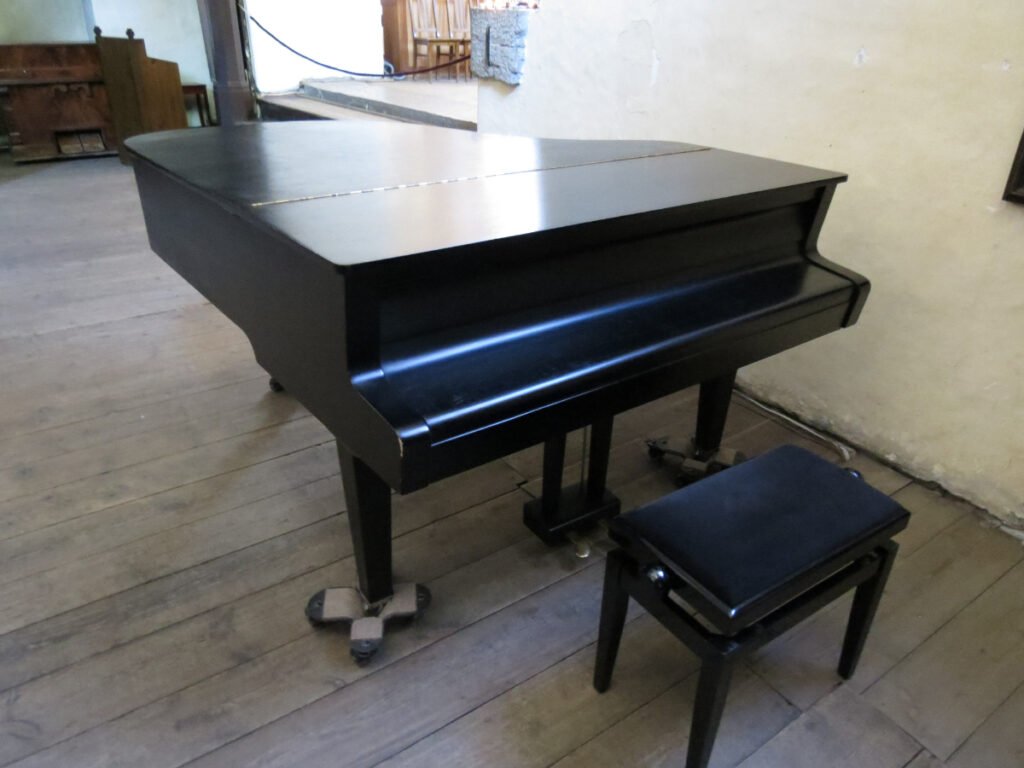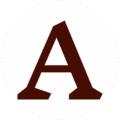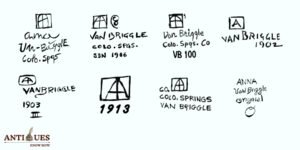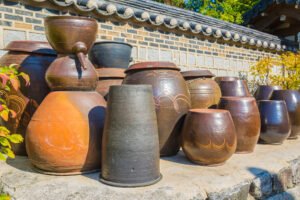Whether you’re a curious collector or a budding pianist, if you spot a dusty old piano tucked away in an attic or antique shop, it’s going to grab your attention. And you might get curious to know its price, features, and other stuff!
So, today, we’ll delve into the art of identifying and appraising antique pianos and unraveling their hidden treasures to help you with the process of estimating their price!
Takeaways
- Good or excellent condition antique grand pianos from luxury brands are one of the most expensive collectibles.
- Look for gold or silver leafed exteriors as these patterns are rare and highly valued.
- Very old, 100+ years old pianos that have lost their sound and functionality don’t fetch good returns unless they are restored or have some historical or celebrity-related significance.
- Always look for the old piano’s serial number to find out its exact manufacturing year and age.
Key Identification Features of an Antique Piano

If you thought that a 50-year-old piano was a vintage item, you might be wrong. A piano is only seen as an antique when it’s at least over 80 years old.
But not any random century-old piano will fetch you good returns; it has to be functional or at least functional enough to generate sounds apart from having these significant features:
- A strong wooden or metal piano soundboard
- High-quality wood materials like rosewood, mahogany, or walnut
- Unique wood carvings, ornate details, inlaid designs, or custom woodworking on the exterior
- Straight-stringing mechanism
- Real ivory or ivory-covered piano keys
History & Evolution of Pianos
The first-ever Piano was introduced in 1700 by Italian instrument maker Bartolomeo Cristofori. But it lacked additional controls, like a pedal! Then Gottfried Silbermann refined Cristofori’s piano design with a damper pedal, creating a sustained sound.
In the late 1700s, the Viennese action became popular in Austria and Germany. Then, in the early 1800s, the first iron-frame grand pianos were introduced for greater structural support. But these pianos are really old and will only be functional today if they don’t go through a full restoration process.
During the mid and late 1800s, upright pianos, which were more affordable and compact, became popular. The early 1900s saw a huge evolution in piano manufacturing, including the square grand piano and grand piano, which are popular today.
By the mid-20th century, many of the features found in modern pianos had been established, marking the end of the antique piano era. The newer models, like electric pianos, were machine-made and so aren’t worth much.
7 Antique Piano Types and Their Estimates Prices
With the continuous evolution of the playing mechanism and exterior, different types of pianos were discovered. Let’s take a look at these types and their estimated base price.
1. Grand Pianos & Baby Grand Pianos

One of the most valuable types of collectibles, a Grand Piano has a horizontal soundboard and strings. With their rich, resonant sound, Grand pianos can cost from $9,000 to $45,000 while Baby Grand Pianos cost around $950 – $15,000 in good condition.
Also, look for exclusive wood finishes like Burl Wood or Brazilian Rosewood and Victorian or Rococo style inlays to hike the price up to $90,000 to $120,000 with complete restoration.
2. Upright Pianos

An upright piano, aka a vertical piano, has a vertically arranged soundboard and strings. Being compact and space-saving, these pianos became quite popular among ancient musicians.
With features like a carved case and rich wood finishes, a fully functional upright piano can be priced as high as $40, 000 – $50,000 today!
3. Square Grand Pianos

These pianos have a rectangular shape with horizontal strings, making them smaller than grand pianos. But their sound quality is not as rich as that of grand pianos, so they’re priced at $1000 – $15,000.
4. Parlor and Chapel Organs

These Victorian keyed instruments can be spotted by their high backs, intricately carved panels, and mirrored shelves. You can spot the Parlor Organ with its tall back while the Chapel Organ is shorter.
Also look for woodwork on the back. These organs are very rare today, costing around $11,000 when fully restored.
5. Melodeons
If you see a miniature square grand piano with reeds and large pumping pedals, you’re looking at a mid-19th-century antique melodeon. You can expect a monetary value of around $10,000 only if they are restored to their original condition.
6. Player Pianos

As the name says, player pianos are self-playing pianos using a perforated paper roll that controls the keys. These were popular in the early 20th century as a form of home entertainment. But since they are new, you can price them up to $5,000- $7.000.
7. Electric and Hybrid Piano
These mid-20th century pianos offered most of the advancements. You can spot Amplified Electrical pianos with their metal strings, amplifier, and speaker.
On the other hand, the 1970s electric pianos were purely based on analog circuitry and didn’t have any strings or hammers. Lacking the handcrafted touch, they don’t fetch hefty returns.
Finding the Value of a Vintage Piano with 7 Easy Steps
Now we know that different types of pianos have different base prices. But it’s not just the types that impact the price; there are other factors you must consider:
1. Track Piano’s Manufacturing Date & Age

A piano’s age largely affects its overall value in the antique market. But, in this case, functionality is more important than age. So, for antique collectors, a vintage piano that is over 50-60 years old may not appeal unless it’s restored.
You can easily check the piano’s age with the serial number and the manufacturing date stamped on the inside of its frame. But in case you can’t find the stamps or date, check these given cues:
- The 1720-1840s Pianos: You can identify these with their handmade structure, smaller keyboards with 60-72 ivory keys, leather-covered wooden hammers to strike strings, and minimal ornate. Since a 1700s piano won’t be functional and doesn’t have monetary value unless restored.
- The 1840s – 1890s Pianos: A piano with detailed ornate carvings, 85 or fewer ivory keys with a straight-strung design is likely a late 1800s piano. It has fewer pedals and a wooden frame with “cabriole” legs. Look for rich wood finished to price this model at $400 – $5.000 or more when restored.
- The 1900-1920s Pianos: These models can be spotted with their well-equipped simplified designs, a maximum of 88 keys with plastic tops, and cast iron frames.
You can also see a three-pedal sustain system and an overstrung design. Though newer, these pianos cost around $5,000 to $50,000 today in good condition.
Here’s a detailed list of the estimated prices of antique pianos based on their age:
| Manufacturing Year | Age | Piano Style | Estimated Price |
| 1850 – 1880 | 140-170 years | Upright, Square Grand & Grand Piano, Melodeons, Organs | $100 – $90,000 (valued only if restored) |
| 1880 – 1900 | 140-120 years | Upright & Grand Piano | $400 – $75,000 (valued only if restored) |
| 1900 – 1915 | 120-105 years | Upright, Grand, & Player Piano | $300 – $70,000 (valued only if restored) |
| 1915 – 1935 | 105- 85 years | Upright & Grand Piano | $200 – $50,000 |
| 1935 – 1955 | 85 – 65 years | Console, Spinet & Grand Piano | $200 – $25,000 |
Look for the brand and date stamps on the inside of the piano, at the back near the strings, soundboard, or plate, on its leg, or pedal lyre.
2. Analyse the Style/Type

Although upright pianos were preferred more because of their compact make, the old grand piano with richer sounds attracts more collectors. With interesting inlays and carvings, their prices can be as high as $100,000 when restored.
Here is a quick list of estimated values of different piano sizes and styles:
| Antique Piano Size | Estimated Height | Estimated Price (Without Restoration) |
| Grand Piano | 60 to 100+ inches tall | $3,500 – $65,000 |
| Baby Grand Piano | 52 to 56 inches tall | $950 – $15,000 |
| Square Grand Piano | 36 to 39 inches tall | $900 – $12,000 |
| Upright Piano | 48 to 56 inches tall | $2,000 – $25,000 |
| Parlor Organs | 40 to 55 inches tall | $800 – $11,000 |
| Melodeons | 30 to -35 inches tall | $800 – $9,500 |
3. Trace Antique Piano’s Brands & Serial Numbers
Now, it’s time to check the brand of your old piano. Simply lift the keyboard lid and look for the brand’s logo and the serial number on the inside of the lid.
Didn’t find the logo, year, model, or serial number here? Check the following spots:
- The back of the piano
- Under the keyboard lid on the ledge
- On the piano’s cast iron plate
- On the sting hammers
- On the soundboard
- Capo d’astro bar (Grand Piano)
- On the Back of the key slip
- On the action frame
Here’s a quick list of some major antique piano brands and their base prices:
| Manufacturer | Piano Model | Base Price (Including Restored Models) |
| Steinway & Sons | Grand & Upright Piano | $5,000 – $100,00+ |
| Bösendorfer | Grand & Upright Piano | $7,000 – $120,00+ |
| Baldwin | Grand & Upright | $2,000 – $40,000+ |
| Bechstein | Grand Pianos | $3,000 – $90,000 |
| Chickering | Chickering & Sons Square Grand Piano | $3,000 – $95,000 |
| Mason & Hamlin | Mason & Hamlin Model A, Piano | $9,000 – $75,000 |
4. Assess the Condition

Just like other antiques, an old piano’s condition definitely impacts its resale price, but not more than its musical state. Usually, musicians and antiquarians use different labels/words for an antique piano’s condition.
Check out the table below to check how the condition affects the price:
| Old Piano’s Condition | Estimated Value |
| Mint: Rebuilt/Reconditioned completely | $2,000 – $90,000+ |
| Excellent: No physical or aesthetic issues | $700 – $80,000 |
| Good: Needs reconditioning and has blemishes or dents | $400 – $25,000 |
| Fair: Mechanical defects and dents, blemishes, etc | $100 – $15,000 |
| Worse/Poor: May not be functional and full of mechanical and physical defects | $0 – $4,500 |
5. Check the Rarity

Did you know that the Steinway upright piano on which the great singer John Lennon composed Imagine was sold for over $2 million dollars in 2000? Crazy, isn’t it?
Well, the rarer and more historically significant the piano is, the more it’s priced. So, make sure to research your piano’s history to put up a valid price for your vintage model.
Here are some rare pianos and their estimated costs:
| Rare Piano Models | Manufacturing Year | Estimated Price |
| Louis XV Pianos | $50,000 – $150,000+ | |
| Blanchet Fils Cottage Size Upright Piano | 1850 | $45,000 – $50,000 |
| Linden & Fritz Square Grand Piano | 1855 | $30,000 – $45,000 |
| Dubois & Seabury Craftsman Style Player Piano | 1844 | $32,000 – $40,000 |
| John Broadwood & Sons Cottage Grand Piano | 1870 | $40,000 – $45,000 |
| Baroque Style Pleyel Upright Piano (19223) | 1854 | $50,000 – $100,000 |
| Bechstein Art-Case Parlor Grand Piano | 1876 | $45,000 – $100,000 |
Look for a piano with reverse keys, black naturals, and white accidentals, as such rare models fetch good returns.
6. Check the Piano Wood Type
Out of different types of woods, vintage pianos made of rich woods like mahogany, walnut, Burl Wood, and Brazilian rosewood are worth the most. And if you find Victorian or Rococo-style inlays, you can hike the price by 10-15% considering their age and state.
Moreover, pianos with real ivory keys are considered authentic antiques over the newer pianos with plastic keys.
To check if the piano keys are ivory or not, look for a yellow tinge on the keys that comes with time. If they are clean and white despite their age, they’re plastic.
7. Analyze the Soundboard Frame Materials
Antique pianos with rich, engraved wooden or solid metal soundboard frames will get you good returns compared to the old pianos that became popular later. That’s because the newer models had lightweight cast iron soundboard frames.
Are 100-year-old pianos worth anything?
Yes, even a 100-year-old piano can be worth thousands of dollars if it is well-restored to its original condition. But, without restoration, such an old piano may not have any monetary value because it won’t be operational.
How can I tell if my piano keys are real ivory?
If the keytops of old pianos have two parts divided by a fine horizontal line, they are most likely ivory. But if the keytop is plain, you can use a magnifying glass to look for a porous texture on it. Other features of real ivory keys are that they are yellow and get dirty very easily.
How do I look up my piano serial number?
You can look for a piano serial number at the following places: the back of the piano, under the keyboard lid on the ledge, on the keyboard hammers, on its soundboard, Capo d’astro bar, and inside the key slip or on the action frame.
So, I hope you have all the information you need to know the type, features, and value of the antique piano. After all, we’re here to help antique lovers like you! If you want to learn the identification and pricing of other vintage musical items, like vintage mandolins and Reuge music boxes, I’ve shared detailed guides for you!
Note: This article is intended for informational, educational, and entertainment purposes only. Some images are illustrative and may not represent actual brands, products, or related entities. All trademarks, product names, brand logos, packaging, and other intellectual property referenced remain the exclusive property of their respective owners. Any brand mentions or references are provided solely for descriptive and educational context and do not imply any formal or commercial association.











I have a Marlowe upright piano, seriel #6354. I am have a great deal of difficulty finding out information about this manufacturer (except that they made excellent pianos, and possibly made in New York). I have been told it is pre-Great Depression piano. Looks like a 1920’s style, possibly 1910. Simple elegant lines. If you send me an email, I can send you detailed pictures. This is our family piano, and I would absolutely love to find out more about it’s history!!! Thank you, Monica Ballyurban p.s. I absolutely LOVE my piano!